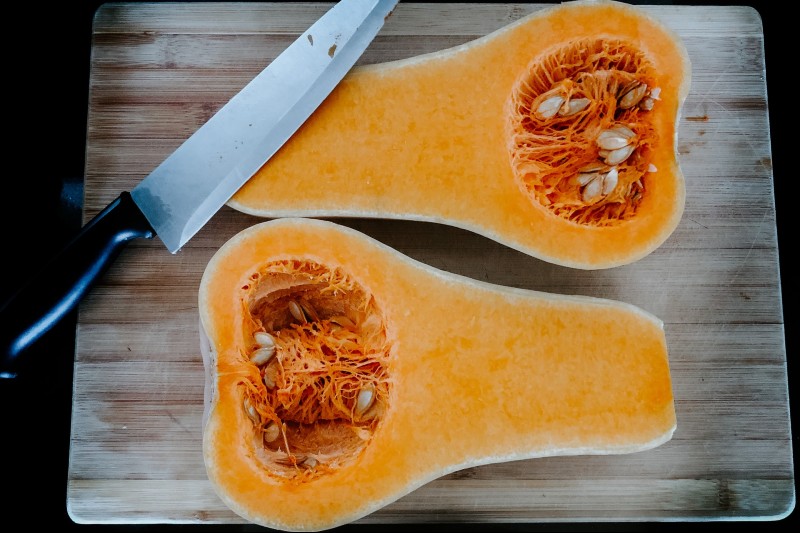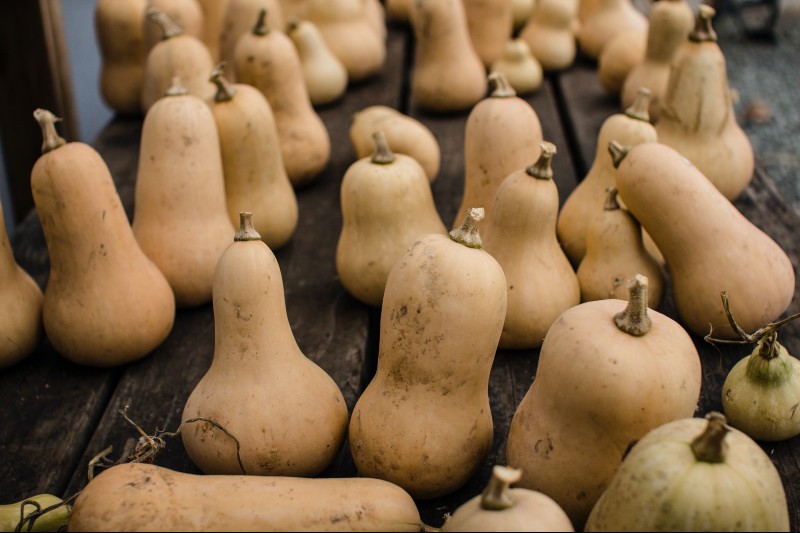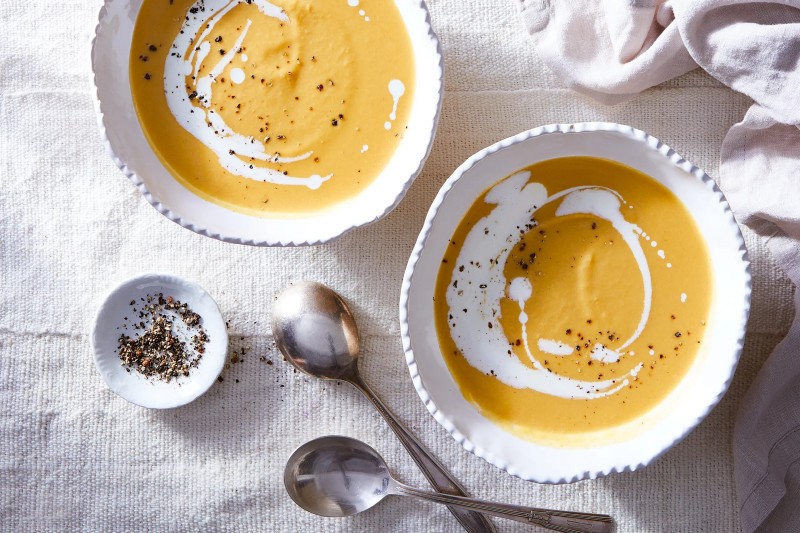
Soups are great any time of the year but they are especially nice when the weather starts to turn to the dark chillier months that end in “Ber.” This easy butternut squash soup recipe is perfect for those days (and nights) where the winds have picked up and are churning the leaves into mini-tornadoes, eventually tossing them to the corner of the yard waiting to be raked up.
Related Guides
- Best Soup Recipes for 2021
- How to Make the Perfect Chicken Soup
- Up Your Squash Game With These Vibrant Recipes
It’s easy to be caught up in the world of soups. Soup recipes are a quick, easy, and delicious way to fill up without having to go through all the work of creating a main dish and a couple of sides. Think of squash soups as a one-pot meal that fills you up. Much like hearty stews, there are several types of squash soup recipes with a variety of flavors.
Is Butternut Squash Soup Healthy?
A soup is mostly liquid which means it will help hydrate you, and squash soups will also boost your immune system, and they are filled with nutrients that fight diseases. It is also a great way for a balanced weight loss program, maintaining your weight, and fighting obesity.
The nutritional value of butternut squash is high, with the gourds chock full of vitamins. In 1 cup of raw butternut squash cubes, there is almost 300% of your daily value in Vitamin A, almost 50% of your daily value of Vitamin C, and roughly 10% of Vitamin B6 and Vitamin E. There are roughly 63 calories, 16 grams of carbs, 0 fat, 1 gram of protein, and about 3 grams of fiber. All these vitamins will help with vision, anti-oxidants, cell growth, and fight against free radicals.

What Can I Do with Butternut Squash?
You can make soups into pretty much anything you like. You can swap out the water for vegetable broth, you can use coconut milk or almond milk yogurt for the dairy. You can make a vegan butternut squash or add meat to it like roasted chicken. The best part is that if you’re on a gluten-free diet, this is the perfect soup for you.
How to Pick Butternut Squash
Butternut squash is technically a winter squash but it is available year-round. The best time to enjoy fresh butternut squash is during the fall and winter. When choosing butternut squash, make sure that it feels heavy and that it has a fat neck with a small bulb. This indicates that the seeds are small and underdeveloped and you will get more meat from the squash.
Roasted Butternut Squash Soup Recipe

(From Food52)
Ingredients
- 3 pounds butternut squash (about 1 large or 2 small), peeled
- 1 pound yellow onions (about 2 medium), peeled and quartered
- 2 tablespoons extra virgin olive oil
- Kosher salt and freshly ground black pepper
- 3 garlic cloves, smashed and peeled
- 2/3 cup walnut pieces (or chopped walnuts)
- .75 ounce Parmesan, finely grated (about 6 tablespoons)
- 1 teaspoon apple cider vinegar
- Whole-milk yogurt, for swirling on top (optional)
Method
- Heat the oven to 400°F. Halve the squash and remove the seeds. Chop into 1- to 1 1/2–inch chunks. Add half of these to a sheet pan, along with the onion wedges. Drizzle with the olive oil and generously sprinkle with salt and pepper. Toss with your hands, breaking the onions into petals. Roast for about 35 minutes — using a spatula to shuffle everything halfway through — until the squash is tender and blistering in spots.
- While that’s working, add 6 cups of water, 2 teaspoons of salt, and the garlic cloves to a stockpot and set over high heat to come to a boil. When the water is boiling, add the remaining squash and cook for about 10 minutes, until the squash is soft. At this point, add the walnuts and cook another 1 minute to soften. Turn off the heat.
- Use a slotted spoon or spider to transfer the squash, garlic, and walnuts to a blender. Pour the squash broth from the pot into a heatproof measuring cup (you should have about 4 cups). Blend the squash mixture until smoothish purée forms. Add 1 cup of squash broth and blend. Add the Parmesan and blend. Taste and add more cheese if you want. Pour the soup into the stockpot.
- When the squash and onion are done roasting, transfer those to the blender and add 1 1/2 cups of squash broth. Blend until smooth. Pour into the stockpot. Add another 1/2 cup of squash broth to the blender and blend (this captures all of the soup that was stuck to the sides). Pour this into the pot, too.
- Stir the vinegar into the soup. Thin out with more broth if you want, then taste and adjust with more vinegar, salt, and/or black pepper. At this point, you can stick in the fridge or freezer — or serve right away, drizzled with yogurt if you’d like.
Tips and Tricks
- Freeze butternut squash for up to three months in an air-tight container.
- Store whole uncut squash for up to one month in a dark cool place.
- Cut the squash in half, remove the seeds, rub oil on it, and roast in the oven for one hour at 400 degrees Fahrenheit or until tender throughout. Then just scoop out the meat. No need to cut or peel!



